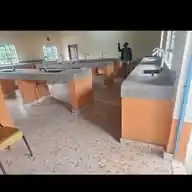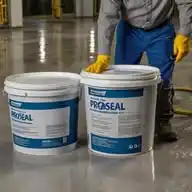
CONSTRUCTION WATERPROOFING TIPS NIGERIA
66 subscribers
About CONSTRUCTION WATERPROOFING TIPS NIGERIA
"Welcome to the Construction Waterproofing Nigeria channel! 🇳🇬 This is the place to learn about the latest waterproofing products, technologies and solutions for builders, contractors and professionals in Nigeria. We will share information on: ✅ Foundation waterproofing systems like Membranes, Coatings, Repair Mortar, Water Resistant Paints, Adhesive , Joiont Sealants,Admixtures and Damp proofing. ✅ Roofing materials like liquid applied membranes, sealants and splash zone protection. ✅ Tanking and water holding structure waterproofing methods. ✅ Below-grade structural waterproofing for basements, underground structures, etc. ✅ Updates on indigenous brands and waterproofing technologies. ✅ Profiles of leading Nigerian waterproofing contractors and case studies. ✅ Industry news, events and regulatory changes. ✅ Training opportunities and certification programs. Feel free to ask any questions, start discussions and give feedback. Our goal is to connect the construction sector with proven solutions to prevent water damage. Whether you're designing, building or maintaining structures, this group is for staying up-to-date on waterproofing in Nigeria. Spread the word!"
Similar Channels
Swipe to see more
Posts

Using cheap nylon as DPM is like using a polythene bag as a roof during rainy season , it’ll tear before the first downpour. Would you protect your child from malaria with a torn net? Then why protect your building with a torn nylon?
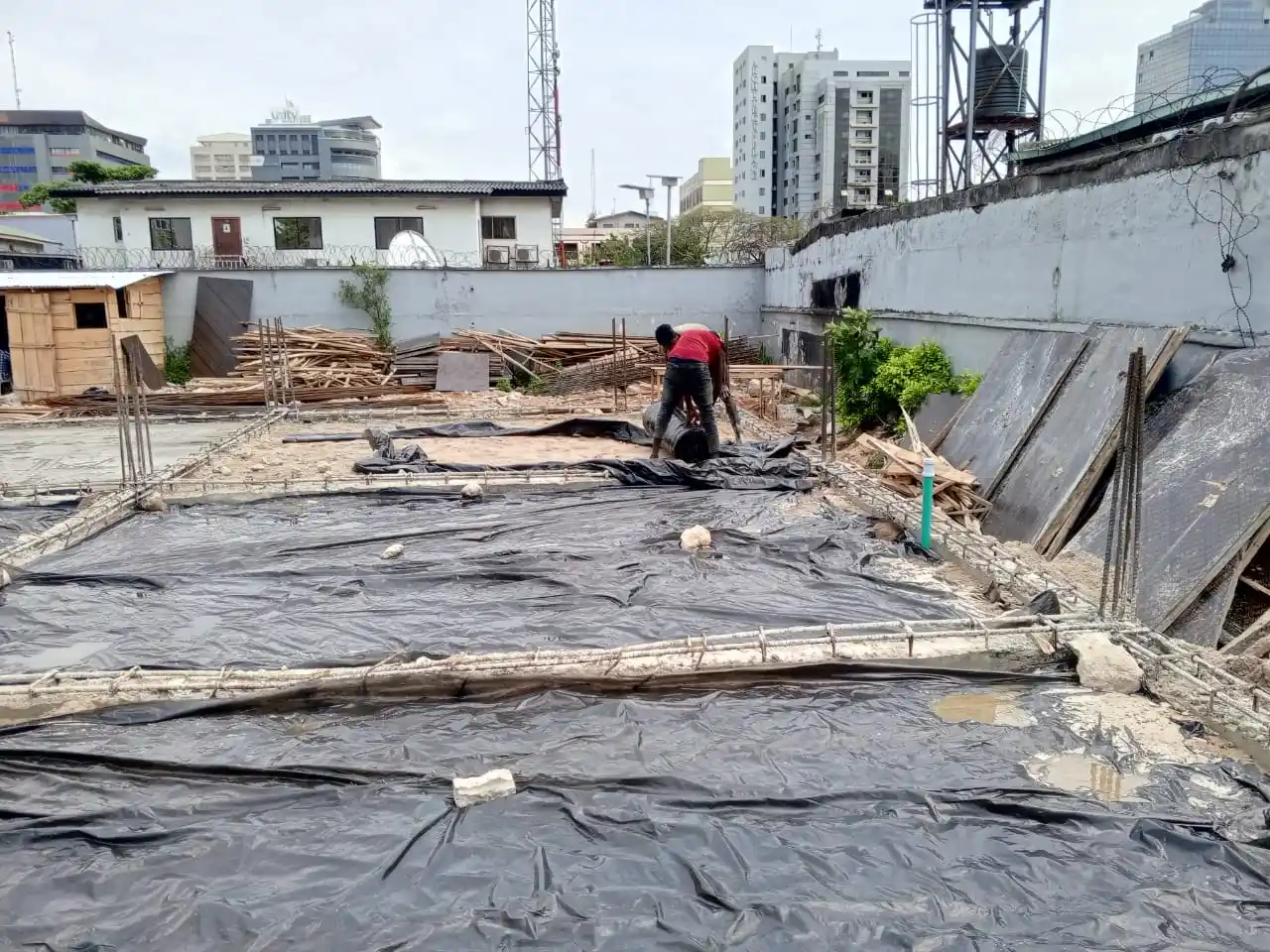

Why Does My Wall Leak Every Rainy Season? It’s one of the most frustrating problems for homeowners and tenants in Nigeria: water patches, bubbling paint, and mold appearing on walls every rainy season. But why? Common Causes: No protective exterior wall coating Use of regular paint instead of water-repellent coatings Hairline cracks in plaster letting in moisture No water sealant used during construction Solution: Use of breathable, flexible exterior waterproof coatings Waterproof grouting for crack repairs Periodic inspection of roof and wall joints before rainy season Tip: If you can see bubbling paint or a musty smell in one section of your wall, it’s already too late. Prevention must start from the outside. .
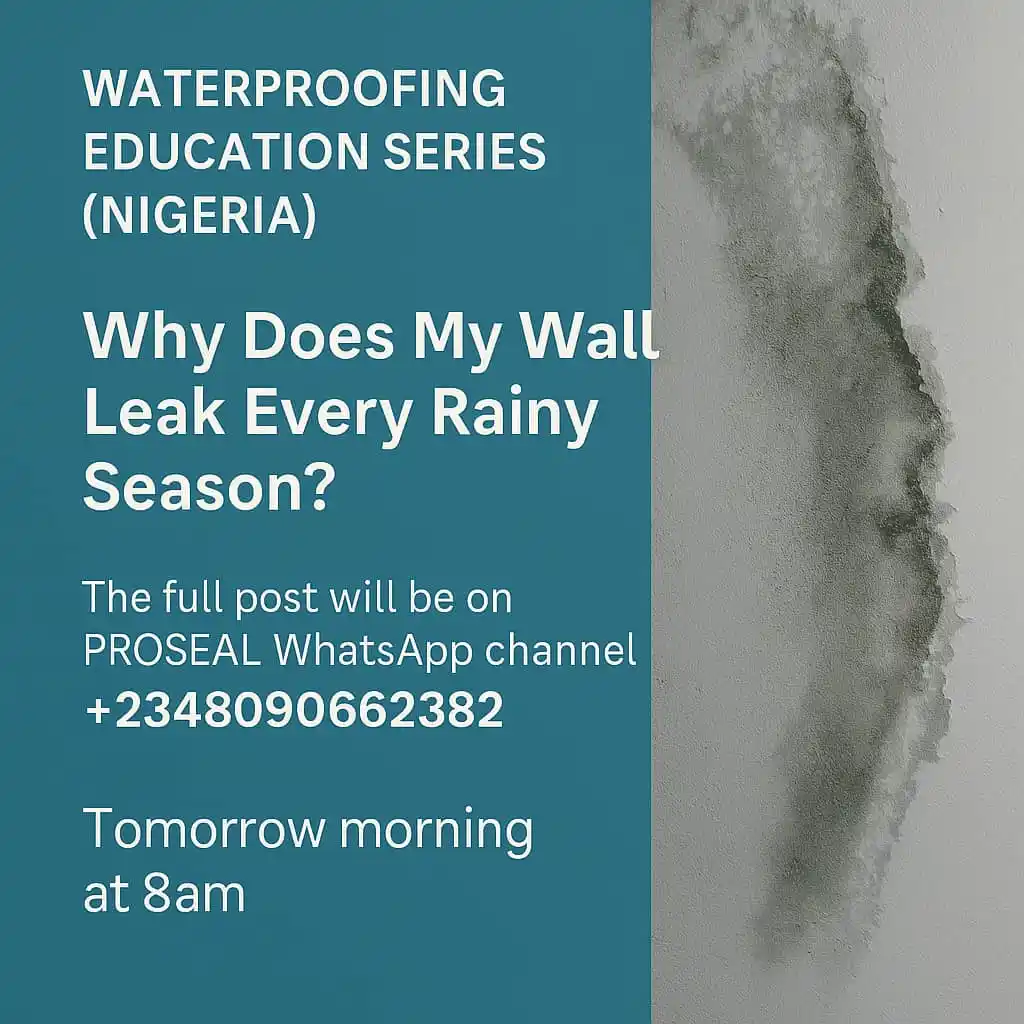

WEEKEND TRAINING: Why Bathrooms Leak Even After Full Tiling (And what most builders get wrong) Bathrooms are one of the most commonly repaired areas in a building — not because of bad tiles or fittings, but because moisture management was never properly addressed during construction. Here’s a breakdown of why bathrooms leak and what you should know ,whether you're a builder, consultant, or property owner: 💧 1. Tiling ≠ Waterproofing Most people assume that once tiles are installed, water can no longer pass through. But the truth is: Ceramic and porcelain tiles are water-resistant — not waterproof. Grout lines are porous, especially when cracked or unsealed. Over time, water seeps through and collects in the screed layer beneath. 🧱 2. No Moisture Barrier Beneath Screed A key mistake during construction is skipping the waterproofing membrane before pouring screed. Here’s what often happens: Screed absorbs water from daily use (showers, splashes) Capillary action pushes moisture sideways and downward Moisture reaches concrete or ceiling slab, leading to paint bubbles, stains, and mould on the lower floor ⚠️ 3. Failure at Drain Edges and Pipe Penetrations Areas around floor drains, pipe outlets, and toilet bases are the most vulnerable. If not sealed properly: Water bypasses the tile layer completely Leaks show up at floor junctions or corners In severe cases, entire tile sections become loose 🔁 4. Thermal Expansion and Cracks As tiles heat and cool daily, micro-movement happens. If the waterproofing layer below isn’t flexible, it cracks — and water finds its way through. 🛠️ What’s the Proper Bathroom Moisture Control Approach? 1. Waterproof the substrate first — especially floor slab and lower wall zones 2. Use a flexible membrane (liquid or sheet) beneath screed 3. Apply sealants around pipe outlets, wall joints, and drain corners 4. Slope floors toward drains properly — to avoid stagnant water 5. Once tiling is done, seal grout and regularly check high-risk areas 💬 Discussion Time: Have you seen leaks from a “new” bathroom before? What methods do you use on your sites for wet area protection? Any mistakes you’ve seen other builders make? Reply below — let’s talk. We'll post answers and live case reviews tomorrow in the PROSEAL WhatsApp Channel. #ConstructionTalks #WaterproofingEducation #SiteWisdom
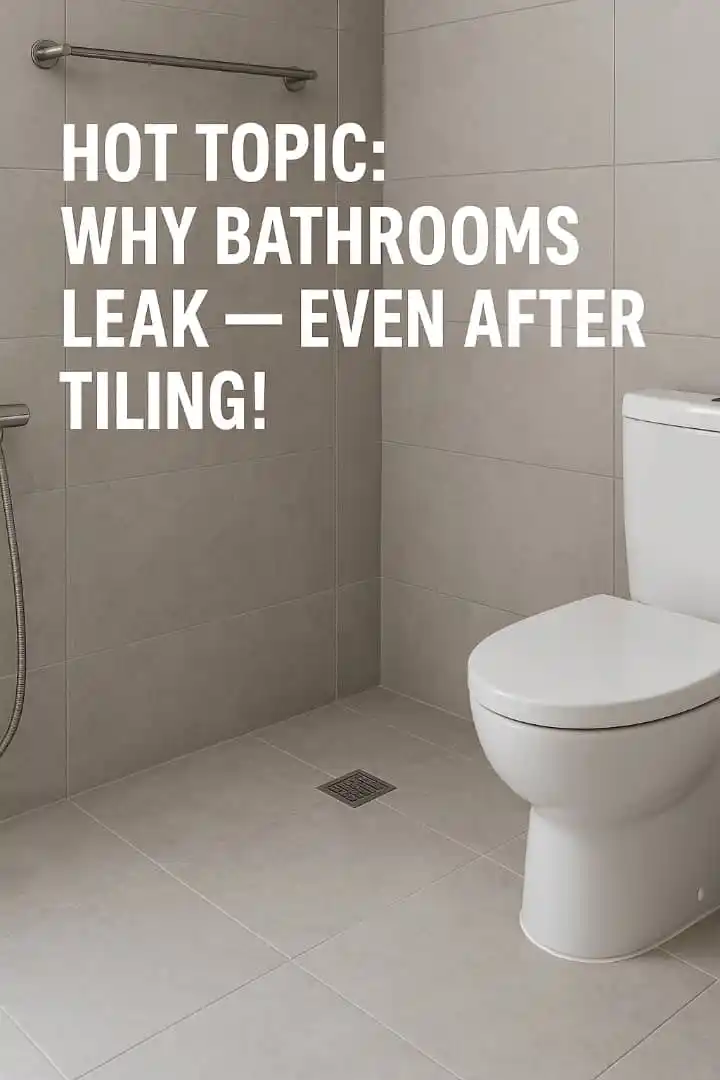

Damp from the Ground Up: The Dirty Truth About Rising Damp Many Nigerian homes suffer from wet patches starting from the base of the wall. This is rising damp — ground moisture moving upward. Why it happens: No damp proof course (DPC) installed Nylon used as DPM tears during construction Capillary action allows water to travel upward Signs: Salt deposits (white powder) on walls Swollen skirting boards or wood damage Proper Fix: Injection damp proofing systems Reapplying DPM with a cementitious or liquid membrane Replastering with waterproof additive.
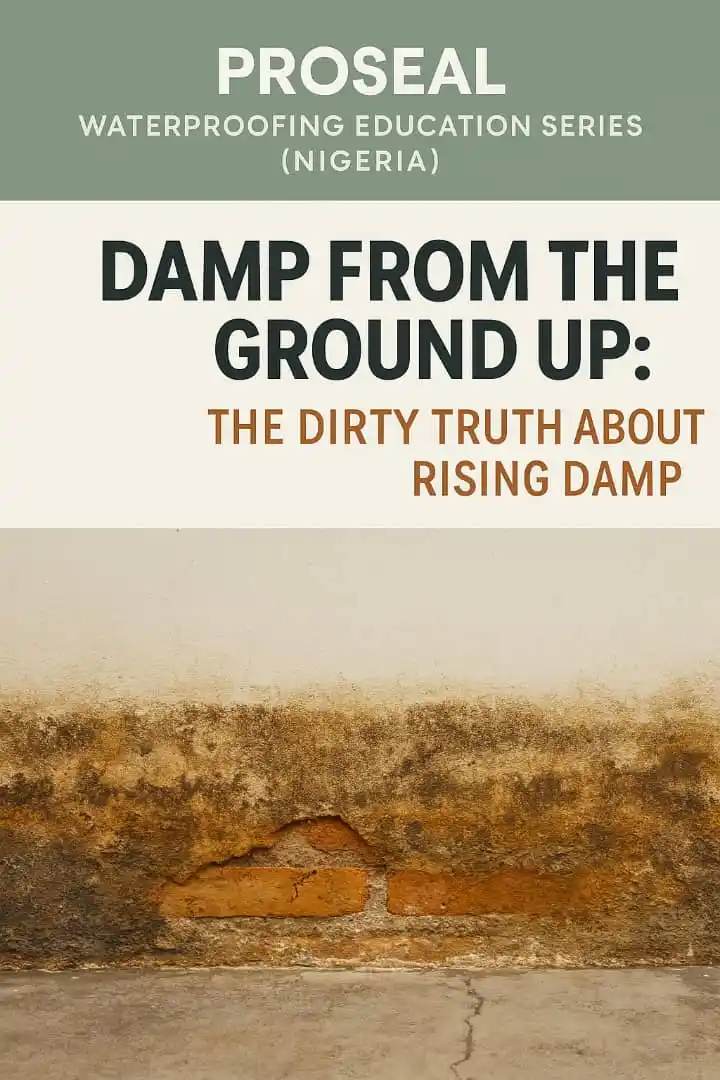

🧱 WEEKEND LEARNING WITH PROSEAL TOPIC: Why Most Waterproofing Fails Within 3–6 Months 🚫 Ever sealed a bathroom, roof slab, or tank… And still saw signs of moisture just weeks later? You're not alone. Here are the 3 most common reasons waterproofing fails in Nigeria: 🔍 1. Using the Wrong Product for the Job Most products sold in markets are just white cement with chemicals — not true waterproofing compounds. What works for concrete tanks won’t work for balconies or roofs. ✅ PRO TIP: Always match product to surface type (e.g. concrete vs tile vs steel). 🛠️ 2. Poor Surface Preparation Applying on a dusty, oily, or cracked surface means the product won’t bond properly — even if it’s high quality. ✅ PRO TIP: Always clean, prime, and test for moisture before application. ⌛ 3. No Curing or Protection After Sealing Once applied, waterproofing needs time to cure and set. If it rains too soon or gets covered too fast, performance drops. ✅ PRO TIP: Protect fresh work for at least 24–48 hours post-application. 🧠 Weekend Q&A ❓Q1: Can I waterproof over tiles? ✔️ A1: Yes — but only with special surface-bonding products. We offer that. ❓Q2: Do you offer a test to check if the surface is still leaking? ✔️ A2: Yes! We offer free on-site inspection in select areas. ❓Q3: Is your waterproofing guaranteed? ✔️ A3: Our premium system is backed by a 10-year warranty. 📲 Want a free guide or inspection? Reply “PROSEAL ME” and our team will reach out. #WeekendWithPROSEAL #WaterproofingTips #BuildRightWithPROSEA

Traumatic Damp: The Silent Destroyer of Nigerian Homes Imagine stepping into your home after a long day, only to be greeted by musty air, peeling paint, and damp patches creeping up your walls. If this sounds familiar, you might be dealing with traumatic damp, one of the most destructive yet overlooked issues in Nigerian homes. What is Traumatic Damp? Traumatic damp refers to persistent moisture problems in walls, floors, and ceilings that weaken buildings, ruin aesthetics, and create an unhealthy living environment. Unlike regular dampness caused by spills or leaks, traumatic damp is deep-rooted, relentless, and can damage an entire structure over time. Symptoms of Traumatic Damp You don’t need a degree in construction to spot the warning signs of traumatic damp. Some common symptoms include: ✔ Peeling or bubbling paint – Walls lose their smooth finish, making them look old and unattractive. ✔ White, powdery deposits on walls (efflorescence) – A sign that moisture is drawing salt from the cement. ✔ Persistent musty smell – Even with regular cleaning, the smell lingers. ✔ Mold or mildew growth – Often appears as black or greenish patches, especially in corners or behind furniture. ✔ Cold, damp walls – Touching the walls might feel wet or unusually cold. ✔ Cracking or crumbling plaster – The structural integrity of your walls may be at risk. Causes of Traumatic Damp in Nigeria Damp issues don’t just happen overnight. In Nigeria, where climate and construction practices play a big role, the main causes include: 1. Rising Damp This occurs when groundwater seeps up through walls due to a lack of a proper damp-proof course (DPC). Many old buildings in Nigeria were built without an effective DPC, making them prone to moisture rising from the foundation. 2. Poor Drainage & Flooding Heavy rains and poor drainage systems cause water to collect around homes, eventually penetrating walls. If your house is in a low-lying area or poorly drained estate, you’re at higher risk. 3. Leaky Pipes & Roofs A small, unnoticed leak from a plumbing line can gradually saturate your walls and floors, leading to dampness. Roof leaks are also a common culprit, especially during the rainy season. 4. Poor Construction Practices Many Nigerian homes are built with low-quality materials or without proper waterproofing solutions. Using salt-laden sand for plastering, for example, can attract moisture and accelerate damp issues. 5. Condensation & Poor Ventilation In many urban homes, airflow is restricted, especially in bathrooms and kitchens. This leads to condensation, where warm air meets cold surfaces, creating moisture buildup. How to Spot Traumatic Damp Early Catching damp issues early can save you from costly repairs. Here’s how to stay ahead: ✅ Inspect your walls regularly – Look for peeling paint, mold, or unusual damp patches. ✅ Check the smell – A persistent musty odor is often a giveaway. ✅ Look for salt deposits – White powdery substances on walls indicate rising damp. ✅ Test with aluminum foil – Tape a piece of foil to the wall overnight. If moisture forms underneath, you have a damp problem. ✅ Monitor your floor tiles – Loose, lifted, or cracked tiles can signal moisture buildup from below. Treatment & Solutions for Traumatic Damp 1. Use High-Quality Waterproofing Products Invest in reliable waterproofing solutions like PROSEAL Damp Cure, PROSEAL Waterproof Plaster, or PROSEAL Liquid Roof Membrane. These products seal walls, prevent moisture penetration, and protect against future damp problems. 2. Apply a Damp-Proof Course (DPC) If your home was built without a proper DPC, consider injecting a chemical DPC treatment to stop rising damp at its source. 3. Fix Leaks & Improve Drainage ✔ Seal roof leaks before they cause major structural damage. ✔ Fix leaking pipes to prevent moisture from spreading through walls. ✔ Improve drainage by redirecting rainwater away from your foundation. 4. Replaster with Damp-Resistant Materials If your walls are badly affected, use damp-resistant renovation plaster instead of traditional sand and cement plaster. This allows moisture to escape while preventing further damage. 5. Improve Ventilation & Airflow ✔ Open windows regularly to reduce condensation. ✔ Use exhaust fans in kitchens and bathrooms. ✔ Rearrange furniture to allow air circulation, especially in damp-prone areas. Final Thoughts Traumatic damp is more than just an eyesore—it’s a silent destroyer that can weaken buildings and create health hazards. Whether you’re a homeowner, landlord, or tenant, taking action early can save you thousands in repairs. By using professional-grade waterproofing solutions like PROSEAL, improving drainage, and ensuring proper ventilation, you can keep your home dry, strong, and beautiful for years to come. Have you experienced damp problems in your home? Share your story in the comments! #DampProofing #HomeMaintenance #Waterproofing

The Hidden Danger in Nigerian Homes: Who’s Most at Risk from Damp and Mould? In Nigeria, damp walls and mould growth are common issues, especially during the rainy season. But what many people don’t realize is that damp and mould are more than just an eyesore—they are a serious health risk. Certain groups of people are especially vulnerable, and exposure can lead to long-term health problems. Who’s Most at Risk? Young children – Their developing immune systems make them more prone to respiratory infections. Elderly individuals – Weakened immunity makes them more vulnerable to illnesses. People with asthma or allergies – Mould spores can trigger severe breathing problems. Those with weakened immune systems – Exposure can lead to dangerous infections and prolonged illness. In many Nigerian homes, poor ventilation, leaking roofs, and rising groundwater make dampness almost unavoidable. Yet, many people continue to live with it, unaware of the serious health consequences. Why Many People Don’t Report Damp and Mould For tenants, especially those living in rented apartments, reporting damp issues can be a struggle. Some fear their landlords may ignore them or even threaten eviction. Others may not know their rights or how to explain the problem effectively. Landlords, on the other hand, often delay fixing the problem due to the cost of repairs or a lack of awareness of how serious the issue is. But ignoring damp and mould doesn’t just damage properties—it puts lives at risk. This is More Than a Maintenance Issue—It’s a Public Health Crisis Damp and mould exposure can lead to chronic coughs, breathing difficulties, skin infections, and even long-term lung damage. If Nigeria is to improve public health standards, we must start by ensuring that homes—whether rented or owned—are safe and dry. Landlords, homeowners, and local authorities must work together to create healthier living spaces. Investing in proper waterproofing and damp-proof treatments can save lives and prevent costly repairs in the future. What Can You Do? If you’re a landlord, ensure your property is properly waterproofed and maintained. If you’re a tenant, report damp issues early and insist on repairs. If you’re building a home, invest in waterproofing to prevent these problems before they start. Have you or someone you know struggled with damp and mould in their home? Share your experience in the comments. Let’s create awareness and push for better living conditions for everyone. Like and share this post—someone out there needs this information.

PROSEAL innovative solutions help extend the life of structures, improve concrete quality, and provide exceptional protection – saving time, resources, and the need for rebuilding!










